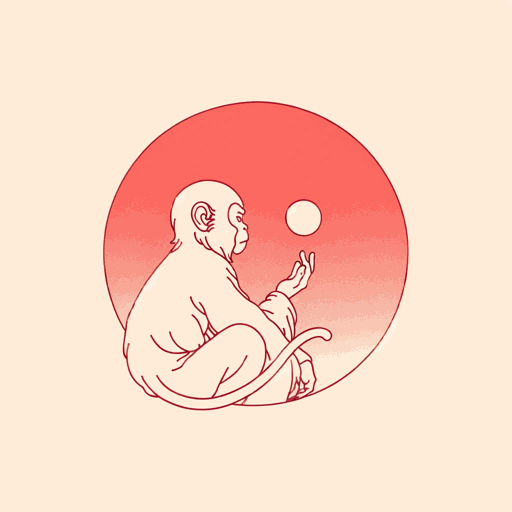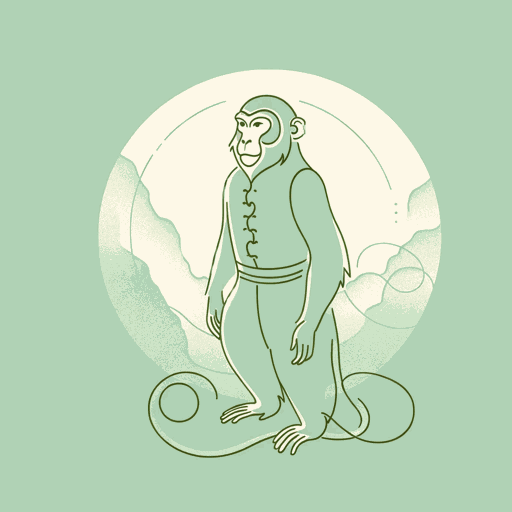85 pages • 2 hours read
Wu Cheng'en, Transl. Anthony C. YuThe Journey to the West: Volume I
Fiction | Novel | Adult | Published in 1592A modern alternative to SparkNotes and CliffsNotes, SuperSummary offers high-quality Study Guides with detailed chapter summaries and analysis of major themes, characters, and more. For select classroom titles, we also provide Teaching Guides with discussion and quiz questions to prompt student engagement.
Summary and Study Guide
Overview
The Journey to the West: Volume I (1983), translated and edited by Anthony C. Yu, contains the first 25 chapters of a 100-chapter hero’s epic, an allegory designed to impart knowledge on how to behave and what values to extol. Originally published in the late 16th century during the late Ming Dynasty, this epic is “loosely based on the famous pilgrimage of Xuanzang…the monk who went from China to India in quest of Buddhist scriptures” (1). Xuanzang lived from approximately 596 to the year 664. This journey was part of a movement of pilgrimages to the west for universal truth imparted by Buddha. There are two original components to the text, one attributed to the author Yang Zhihe, the other attributed to the compiler Zhu Dingchen.
For an abridged translation of Wu Cheng'en's full work, please refer to the study guide for Monkey: A Folk Novel of China (1942), translated by Arthur Waley.
Plot Summary
Shortly after the formation of the universe, a monkey is born from an immortal stone, possessing the traits of both the Yin and Yang. He becomes a king of other monkeys, and then trains in the Way, a Daoist discipline which earns him the ability to travel great distances with ease and to transform himself. Unfortunately, he angers his master and is cast out, at which point his selfishness and greed take hold of him. He develops an inferiority complex that leads to his offending Heaven. To get him under control, the ruler of Heaven—the Jade Emperor—offers him a fake title and gifts. When the monkey offends Heaven again, he flees to Earth, where a Heavenly army pursues him.
Wukong defies this army, until the Emperor’s nephew Erlang and the highest sage, Laozi, work together to trap him. The Jade Emperor sentences Wukong to death. Wukong is captured by the Buddha, Tathāgata, and imprisoned by five mountains on the promise that he can one day redeem himself. Guanyin and Hui’an leave to find the pilgrim that Tathāgata calls for to quest for knowledge, and Guanyin promises three monsters—and Wukong—opportunities for redemption. For Wukong, he will have to serve the pilgrim. The pilgrim, Xuanzang, grows up an orphan named and raised by a monk. He learns the Way, and when he’s 18, he finds out who his parents were and how they were wronged by bandits. He avenges his parents, and after his mother’s suicide, Xuanzang returns to the monastic lifestyle.
Emperor Tang Taizong is supposed to save the Dragon King from execution after the Dragon King ruins a fortune teller, but he fails because the executioner and judge, Wei, kills the Dragon King while dreaming. Taizong dies of sadness, and in the Underworld, promises to send food and hold a mass for the trapped souls so they can be reborn—he’s then sent back to the world of the living because he still has another 20 years to live. Taizong makes good on his promises.
At a mass sanctioned by Taizong and led by Xuanzang, Guanyin shows up and announces the quest to the west; Xuanzang volunteers. Xuanzang, also called Tripitaka, is helped along his journey and in return, saves a man’s father’s spirit. The man then agrees to guide him; when they are on a mountain, they hear Wukong cry out for his master. Tripitaka frees Wukong; they’re attacked, and Wukong kills the bandits attacking them. Tripitaka chides him, and Wukong flees. Guanyin helps Tripitaka control Wukong, who now goes by Pilgrim. Later, they gain control of the dragon that Guanyin promised redemption to when she turns it into a horse. Along their journey, Pilgrim is becoming a better soul, but he still has lessons to learn, such as how to curb his pride and vanity—a lesson he must learn when the abbot at the monastery of Guanyin tries to steal Tripitaka’s holy cassock because Pilgrim wanted to show it off.
Pilgrim and Guanyin work together to subdue a bear monster and regain the heavenly cassock for Tripitaka; Guanyin reminds Pilgrim to be good and not lazy. Despite this, Pilgrim continues to cause trouble for the remainder of Volume I of The Journey to the West, though as the entire epic contains 100 chapters, and Volume I is only the first 25, the monkey still has time to achieve redemption and enlightenment.
Related Titles
By these authors


